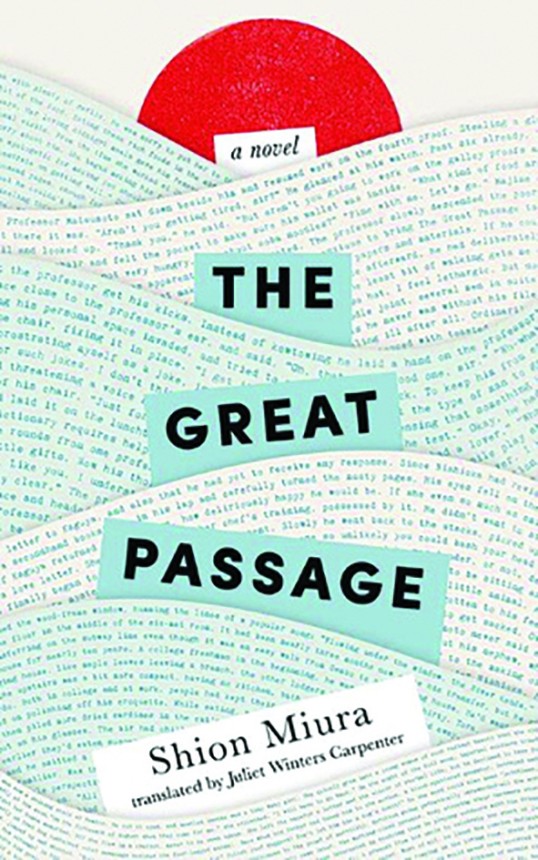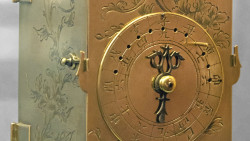
September 30, 2017
Book Review: The Great Passage
Shion Miura’s The Great Passage is all about words in a book — one book in particular. It’s a dictionary that is being compiled by Gembu Books under the guidance of Kohei Araki. Araki is a man who has dedicated his life to lexicography, the practice of compiling dictionaries, ever since he was gifted his […]
Shion Miura’s The Great Passage is all about words in a book — one book in particular. It’s a dictionary that is being compiled by Gembu Books under the guidance of Kohei Araki. Araki is a man who has dedicated his life to lexicography, the practice of compiling dictionaries, ever since he was gifted his first dictionary as a boy. The word that first fascinated him, which led further and further into other words, was koe; voice. It’s fitting, because so much of this book is about trying to communicate clearly with others, and not just through words on a page.
Araki explains why the dictionary itself is called The Great Passage: because “a dictionary is a ship that crosses the sea of words … People travel on it and gather the small points of light floating on the dark surface of the waves. They do this in order to tell someone their thoughts accurately, using the best possible words. Without dictionaries, all any of us could do is linger before the vastness of the deep.”
This idea is reflected in the structure of the story, with the making of the dictionary carrying a cast of characters through the fifteen years it takes to see it published. The Great Passage has a philosophy of thoughtfulness and dedication to words that any reader will understand. In five chapters, the story is told alternatingly from the perspectives of Araki, his protégé Mitsuya Majime, the brash Masashi Nishioka, former fashion editor Midori Kishibe, and then back to Majime.
For a subject that could easily become internal and intellectual, the varying viewpoints create a story that is far more about human connections and relationships, particularly for Majime, the most archetypically bookish, dishevelled, and distracted of all the characters. While each chapter is from the perspective of a different character, they are all told by a kind but detached third-person narrator. So, although the characters themselves are distinct, the voice is essentially the same throughout.
There are moments of humour in the novel, in misunderstandings, conversations and confusions. One of the funniest moments is an epilogue in the form of an annotated love letter written by Majime. Kishibe and Nishioka provide an entertainingly critical commentary on Majime’s absurdly wordy and unromantic letter. It’s a good demonstration of Miura’s playfulness, and the personalities she is more than capable of expressing.
The result is a book that is gentle and charming, but steers clear of easy sentimentality. Miura’s prose — and Carpenter’s translation — glides along, smooth and precise, with flashes of quiet poetry. It’s a style reminiscent of Yoko Ogawa’s classic The Housekeeper and the Professor or Hiromi Kawakami’s Nakano Thrift Store. In all three, there is a human warmth that is rarely captured with such sincerity. Unlike Kawakami and Ogawa, Miura’s writing is more strictly realistic, and delves less deeply into the darkness or weirdness that exists in people. But she is at her best when she writes of contradictions and the less-than-noble impulses of her characters.
Nishioka, with his infuriating show of bravado and his petty insecurities, is both the least likeable and the most interesting. He isn’t suited to the painstaking, unglamorous work of lexicography. He’s the one who uses words thoughtlessly, inaccurately, unwisely. He struggles to say what he means. He hides sincerity behind jokes, uncertainty behind nonchalance. But he is also the one that is most aware of human flaws and sensitivity, even as he tries to deny it in himself. In a novel about dedication and passion, Nishioka is the one lacking these guiding lights, and he’s aware of that. Watching his colleagues feverishly at work collecting words and compiling meanings, he wishes for “something that meant as much to him as dictionaries did to Majime and the rest. Then surely he would see everything differently. He would see a world of such dazzling brightness it would hurt.” Nishioka arguably has the most complete story arc for this reason. The other characters find their place in the dictionary department, but Nishioka has to go searching for his. It’s less satisfying, not as neat, but it’s more turbulent and real.
If the making of the dictionary called The Great Passage is an arduous journey, the novel about it is anything but. While we may be concerned for the characters, there’s no real fear for them. It’s a peaceful cruise through pleasant waters, and there’s nothing wrong with that, because Miura writes with a perceptive precision that is never boring. But if there were more storms, if there was a danger of shipwrecks, Miura’s deft touch could be even more apparent. She steers The Great Passage with a subtle assurance that means there’s no doubt she could navigate through any storms she could create.







